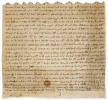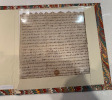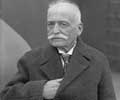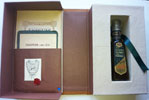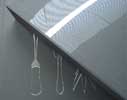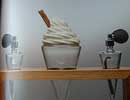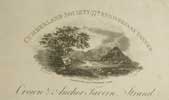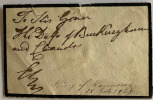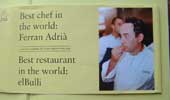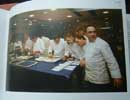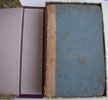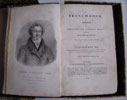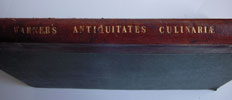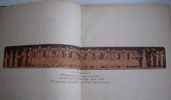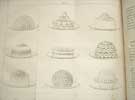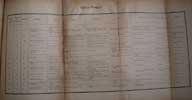RITZ'S Carlton Restaurant.
ON BOARD THE S.S. "KAISERIN AUGUSTE VICTORIA" (HAMBURG AMERICAN LINE) Under the Management of THE CARLTON HOTEL, LONDON.
Large 4to. 3feps (with 2 menus tipped in to last fep) Title Page. 160 pages. All pages blank on the reverse of the text. Many photographs of the Ship's different facilities, (including the Restaurant). 3 feps. Many pages strengthened on the the blank side due to brittleness. Internally very clean. The two menus tipped in before the title page are both dated 1908. The 'Kaiserin' one is a breakfast menu and the 'Amerika" one appears to be a Table d'Hote Lunch menu. Both are from Escoffier's time of tenure and responsibility for both of those ship's restaurants. Bound in modern half dark calf and bottle green cloth boards. The spine has blind tooling. The original cover from the Al'a Carte Restaurant pasted on the front cover. All pages very slightly age browned. Overall a very handsome and rare item.
- This book is a very sumptuous production and a joint venture between the 'Hamburg American Line' and 'The Carlton Hotel' advertising the 'S.S. Kaiserin Auguste Victoria's' conception, preparation and maiden voyage from Hamburg to New York on May 10th, 1906. The 705 foot, 24581 ton giantess, S.S. Kaiserin, was launched on August 20th 1905, and for the next year was outfitted with many new features. One that highlighted the new ship and caused a lot of excitement was the opening of an a'la Carte Restaurant, staffed and run by the famous Ceasar Ritz. The Restaurant also boasted its own dedicated Kitchen, staffed and run by the equally famous Auguste Escoffier. This was an important new facility built to a very fine specification and quality. Grill Rooms had featured on previous voyages and had been very popular. The opening of the new a la Carte Restaurant proved to be equally popular and became, against initial expectations, fully booked. This was undoubtably due to Escoffier's involvement and the unusual shipboard experience of being able to sample French cuisine of the highest standard . We are informed in the book that the Kitchens on the maiden voyage were not large enough to meet demand, and that they had to completely alter one of the decks to double the kitchen capacity. Escoffier and Ritz were also responsible for Restaurants on board other Hamburg America Line ships, one other being the "S.S. Amerika". Both of these ships were built side by side at the Harland Wolff shipyards in Belfast. 'Amerika' was launched on April 20th 1905, and the 'Kaiserin' one month later. This well produced book records an aspect of Escoffier's career that is the least documented. It is also very rare, especially with the two Escoffier's menus enclosed that would have been printed and offered to guests just after the expanded kitchen refit.

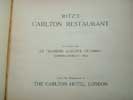
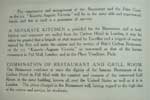
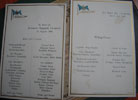
click on image to enlarge

Modern category
ref number:
11049 

